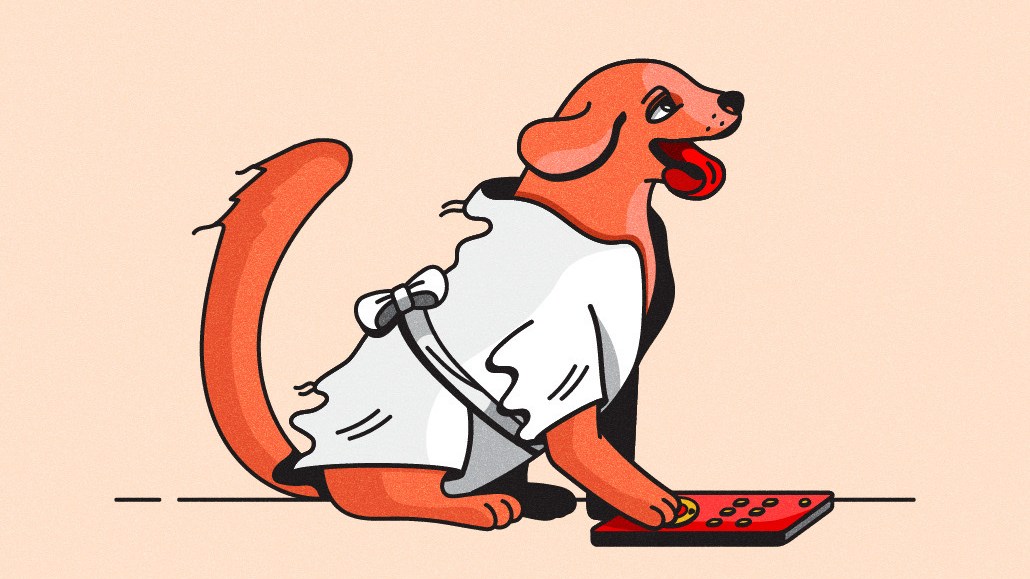Digiday+ Research: Publishers are a lot less optimistic about NewFronts this year

This research is based on unique data collected from our proprietary audience of publisher, agency, brand and tech insiders. It’s available to Digiday+ members. More from the series →
Interested in sharing your perspectives on the media and marketing industries? Join the Digiday research panel.
NewFronts week and TV’s upfront season are here. And buyers and sellers alike are anxious to see how it all shakes out after a year of ups and downs in the TV ad business.
Digiday+ Research surveyed about 50 publisher professionals to find out how they expect buyers will spend during this year’s NewFronts and upfront cycle. The short answer is there’s a lot less optimism among publishers this year than there was last year.
Digiday’s survey found that publishers expect buyers to spend significantly less during this year’s NewFronts and upfront event than last year’s (although they do expect NewFronts spending to be stronger than upfront spending).
More than a third of publisher pros (35%) told Digiday that they expect buyers to spend somewhat more during this year’s NewFronts than last year’s — that’s a significant percentage. However, it is a fairly steep drop from the 45% who said the same last year. And only 2% of publishers said they expect buyers to spend significantly more during this year’s NewFronts than last year’s, down from 12% who said so last year.
Meanwhile, the percentage of publisher pros who said they expect buyers to spend somewhat less during NewFronts this year than last year saw a big jump from 2022: 29% said buyers will spend somewhat less this year, up from just 9% who said the same last year.
When it comes to upfront spending, more than one-third of publisher pros (35%) told Digiday they expect buyers to spend somewhat less this year than they did last year, up significantly from the 20% who said the same last year.
At the same time, fewer than a quarter of publishers (23%) said they expect buyers to spend somewhat more during upfronts this year, down from a third (33%) last year. And a very small 4% said they expect buyers to spend significantly more this year, compared with 13% last year.
Digiday’s survey found that there will be a big difference this year in publishers’ NewFronts offerings when it comes to upfront commitment deals. Sixty-one percent of publisher pros said they plan to offer this type of deal to buyers during this year’s NewFronts. Just 33% said the same last year.
The percentage of publishers who will offer standard ad buys during NewFronts this year also saw a jump, albeit much smaller. Last year, 62% of publisher pros told Digiday they planned to offer standard ad buys during NewFronts. This year, that percentage is up to a full three-quarters (75%).
Three-quarters of publishers also said that they plan to offer content sponsorship deals during NewFronts this year — making it the most popular type of deal to offer, tied with standard ad buys. This percentage remained fairly steady from last year, when 79% of publishers said they planned to offer content sponsorships during NewFronts.
During the upfront cycle this year, the largest percentage of publisher pros told Digiday that they expect buyers to spend somewhat more on streaming platforms than on TV networks, just as they did last year. Thirty-seven percent of publishers said somewhat more spending will go toward streaming than networks this year, compared with 38% last year.
Overall, publishers told Digiday they don’t see much changing this year when it comes to the balance between spending on streaming platforms vs. TV networks during this year’s upfronts. The biggest difference Digiday’s survey found was between the 22% of publisher pros who said they expect buyers to spend somewhat more on networks than streaming this year, compared with the 18% who said so last year.
Want to discuss this with our editors and members? Join here, or log in if you're already a member.
More in Media

Media Briefing: The top trends in the media industry for 2025
This week’s Media Briefing takes a look at the top trends from 2025, from digital advertising revenue performance to AI licensing deals.

Digiday Scorecard: Publishers rate Big Tech’s AI licensing deals
Digiday has compiled a scorecard grading AI platforms to make sense of the growing number of players in the AI content licensing market.

Publishers are hunting for AI prompt data — now they’re starting to get it from third-party companies
Publishers are finally gaining some visibility into AI search, as new prompt data tools crack open a black box.







